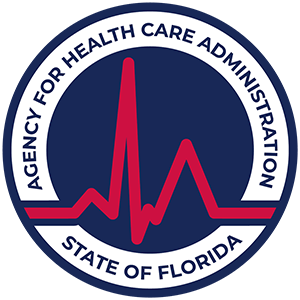Addiction Relapse Rates in the United States Revealed
Explore addiction relapse rates in the United States, key factors, and strategies for effective prevention.
Top 10 Key Statistics on Addiction Relapse Rates in the United States
- 85% of individuals relapse within a year of treatment.
- Two-thirds return to substance use within weeks of beginning addiction treatment.
- More than 75% of subjects relapsed within 1 year of treatment for alcoholism.
- Nicotine, heroin, and alcohol produce similar rates of relapse, ranging from 80-95%.
- 40-80% of patients receiving treatment for alcohol use disorders have at least one drink within the first year after treatment.
- Around 20% of patients return to pre-treatment levels of alcohol use.
- 85% of individuals relapse within a year of treatment.
- Two-thirds return to drug use within weeks of initiating addiction treatment.
- 13.1% of White individuals, 18.5% of Black individuals, and 12.3% of Hispanic individuals reported experiencing a substance use disorder.
- In 2021, 20.7% of Native Hawaiian and Pacific Islander individuals experienced a substance use disorder.

Understanding Addiction Relapse
When examining addiction relapse rates in the United States, it's crucial to have a comprehensive understanding of both the statistics and contributing factors. This information can shed light on the scope of the problem and help guide effective prevention and treatment strategies.
Statistics on Relapse Rates
Addiction relapse is a common occurrence, with a significant number of individuals returning to substance use after treatment. According to the National Institute on Drug Abuse, 85 percent of individuals relapse within a year of treatment, and two-thirds return to substance use within weeks of beginning addiction treatment [1].
In a study conducted by the NCBI, it was found that more than 75% of subjects relapsed within 1 year of treatment for alcoholism. The study also demonstrated that nicotine, heroin, and alcohol produced highly similar rates of relapse over a one-year period, in the range of 80-95%.
While it's important to note that relapse rates can vary widely depending on several factors such as the type of substance used, the duration of use, and individual circumstances, these statistics highlight the pervasive nature of addiction relapse.
Factors Contributing to Relapse
Several factors can contribute to addiction relapse. A significant proportion (40–80%) of patients receiving treatment for alcohol use disorders have at least one drink, a “lapse,” within the first year of after treatment, whereas around 20% of patients return to pre-treatment levels of alcohol use.
Relapse prevention (RP) is a cognitive–behavioral approach with the goal of identifying and addressing high-risk situations for relapse and assisting individuals in maintaining desired behavioral changes. RP has two specific aims. The first is to help individuals who have made a behavioral change (i.e., stopped using drugs) to maintain that change. The second aim is to help individuals who are attempting to change their behavior (i.e., still using drugs) to make the desired change and to maintain it.
Understanding these factors can aid in the development of more effective prevention and treatment strategies. By identifying potential triggers and high-risk situations, individuals and their support systems can take proactive steps to mitigate the risk of relapse.
Demographic Impact on Relapse
In the context of addiction, relapse is not limited to any particular demographic or socioeconomic group. However, certain groups may be more susceptible due to a variety of factors.
Ethnicity and Relapse Rates
In 2022, past-year substance use disorder affected different ethnic groups differently in the United States. According to American Addiction Centers, 13.1% of White individuals, 18.5% of Black individuals, and 12.3% of Hispanic individuals reported having experienced a substance use disorder. Although data could not be adequately collected for Native Hawaiians and Pacific Islanders in 2022, in 2021, 20.7% of this group experienced past-year substance use disorder.
It is important to note that these figures do not directly correspond to relapse rates. According to Ashley Addiction Treatment, 85% of individuals relapse within a year of treatment, and two-thirds return to drug use within weeks of initiating addiction treatment.
Sociodemographic Disparities
Sociodemographic factors can also impact addiction relapse rates. A study indicates that individuals with opioid addiction were more likely to be single, unemployed, belong to a lower socioeconomic status, and have a criminal record. This suggests that social and economic factors can potentially influence the likelihood of relapse.
While it's clear that ethnicity and sociodemographic disparities can influence the prevalence of substance use disorders, more research is necessary to understand their direct relationship with relapse rates. However, understanding these disparities can be beneficial in tailoring treatment and prevention strategies to the needs of vulnerable populations.
Psychological Factors in Relapse
In understanding addiction relapse rates in the United States, it's crucial to consider the psychological factors that play a significant role. These factors, including self-efficacy and mental health, can significantly impact an individual's likelihood to relapse.
Self-Efficacy and Relapse
Self-efficacy, defined as the degree to which an individual feels confident and capable of performing specific behavior in a particular situational context, is an influential factor in the addiction relapse process. Research indicates that higher self-efficacy scores correlate to a longer interval for relapse to alcohol use [2].
In other words, individuals who confidently believe in their ability to resist the urge to use substances might be able to remain abstinent for more extended periods compared to those with lower self-efficacy. This finding underscores the importance of cultivating self-efficacy as part of addiction recovery efforts.
Mental Health and Relapse Risk
Mental health conditions, particularly depressive symptoms and drug cravings, are also predictive of subsequent relapse risk. Studies reveal that higher depression scores predicted shorter time to relapse and less likelihood of abstinence. Similarly, higher craving levels during abstinence and in outpatient treatment are known to predict relapse and return to drug use.
These findings highlight the intricate relationship between mental health and substance use disorders. Therefore, it is crucial to adequately address mental health issues as part of an integrated treatment approach for addiction. This approach can potentially reduce relapse rates and support long-term recovery.
Understanding the psychological factors influencing addiction relapse rates in the United States is a crucial step toward developing effective interventions and support systems. By addressing these elements, individuals can be better equipped to manage their recovery journey and reduce their risk of relapse.
Biological Influences on Relapse
The biological factors that contribute to addiction relapse rates in the United States are multifaceted. These include influences from brain function and hormonal changes, both of which can significantly impact an individual's vulnerability to relapse.
Brain Function and Relapse
Changes in brain function, particularly in the medial frontal regions, play a critical role in addiction relapse. Brain atrophy in these regions and hyperreactivity of the anterior cingulate during withdrawal were identified as important factors in drug withdrawal and relapse risk [3].
Furthermore, serum brain-derived neurotrophic factor (BDNF) levels, a protein that supports nerve health, have been found to be significantly higher in abstinent cocaine abusers and alcoholics compared to controls. Higher serum BDNF levels were highly predictive of shorter time to cocaine relapse and higher amounts of cocaine used.
Hormonal Factors in Relapse
Hormonal measures also appear to be predictive of future relapse risk. Factors such as cortisol levels, a hormone released in response to stress, and the cortisol/corticotropin (ACTH) ratio as a measure of adrenal sensitivity, have been linked to relapse. Higher basal ACTH levels and high cortisol/ACTH ratios more than doubled the risk of shorter time to relapse [3].
Understanding these biological influences is crucial to developing effective treatment strategies for relapse prevention. A holistic approach that addresses both the physiological and psychological aspects of addiction is necessary to combat the high addiction relapse rates in the United States.
Treatment Approaches for Relapse Prevention
When dealing with addiction, it's crucial to understand that it's a chronic brain disease with a relapse rate similar to other chronic conditions like diabetes. When people stop their treatment plans for chronic conditions, they are more likely to relapse. Given this, it is essential to explore different treatment methods that can aid in addiction recovery and help prevent relapse. The following treatment approaches are often effective in reducing the addiction relapse rates in the United States.
Cognitive-Behavioral Therapy (CBT)
Cognitive-Behavioral Therapy (CBT) is one of the most widely used forms of treatment for addiction recovery. CBT is a type of psychotherapy that helps individuals understand the relationship between their thoughts, feelings, and behaviors. By identifying and changing negative thought patterns, individuals can learn to manage their addiction and reduce the risk of relapse.
CBT interventions, such as Relapse Prevention (RP), have been shown to be effective in reducing relapse rates, particularly for alcohol use disorders. RP is a cognitive-behavioral approach that teaches individuals to anticipate and cope with the potential for relapse.
Medication-Assisted Treatment (MAT)
Medication-Assisted Treatment (MAT) is another effective approach to managing addiction and preventing relapse. MAT involves the use of medications in combination with counseling and behavioral therapies to provide a holistic approach to the treatment of substance use disorders.
A variety of drugs are used in MAT to assist individuals on their recovery journey. For alcohol use disorders, medications such as disulfiram, naltrexone, and acamprosate have been shown to reduce the risk of relapse. For opioid use disorders, methadone and buprenorphine are commonly used.
The choice of medication depends on the individual's specific needs and the substance they are trying to recover from. Always consult with a healthcare professional to determine the best course of treatment.
Both Cognitive-Behavioral Therapy and Medication-Assisted Treatment have shown promising results in reducing addiction relapse rates in the United States. However, it's important to remember that treatment should be individualized and catered to the person's unique needs and circumstances. A combination of various forms of therapy and treatment approaches often yields the best results.
Support Systems for Relapse Prevention
Preventing relapse is a complex process with multiple dimensions. Two critical components of any relapse prevention strategy are peer support programs and monitoring and contingency management.
Peer Support Programs
Peer support programs such as Alcoholics Anonymous (AA), Narcotics Anonymous, and SMART Recovery are widely used in addiction recovery. These programs emphasize frequent meetings, working through a program, and mentorship. However, the efficacy of peer support groups in preventing relapses is limited, and there is a lack of evidence that these groups are superior to other relapse prevention interventions [5].
Despite these limitations, peer support programs provide essential emotional support and a sense of community to individuals in recovery. They provide a platform for individuals to share their experiences, challenges, and successes in a safe and supportive environment. This can reduce feelings of isolation and help individuals maintain their motivation for recovery.
Monitoring and Contingency Management
Monitoring is an essential tool in relapse prevention programs. Various forms of monitoring have been used to detect drug/alcohol use in such programs. These include urine drug screens, breathalyzers, skin monitors, and saliva tests. Monitoring provides objective evidence of abstinence and informs the implementation of contingency management programs and other interventions.
Contingency management programs are based on the principle of reinforcing positive behaviors (like maintaining sobriety) and discouraging negative behaviors (like drug use). These programs often involve providing rewards or incentives for maintaining sobriety, such as vouchers, privileges, or other tangible rewards. This approach has been shown to be effective in promoting abstinence and reducing relapse rates.
It's important to note that addiction is a chronic brain disease with a relapse rate similar to that of other chronic conditions like diabetes. When people stop their treatment plans for chronic conditions, they are more likely to relapse. Hence, it's crucial to adhere to the treatment plan and utilize support systems effectively.
Relapse triggers are another critical component of relapse prevention. Triggers are emotional, environmental, or social situations that bring up memories of drug or alcohol use in the past, leading to the impulse to use a substance again. Triggers do not necessarily lead to relapse, but they make it harder to resist cravings. Understanding and managing these triggers is crucial in preventing relapse.
In conclusion, a comprehensive approach to relapse prevention includes both peer support programs and monitoring and contingency management. By utilizing these tools effectively, individuals in recovery can maintain their sobriety and reduce their risk of relapse.














.svg)
.jpg)







